If a woman has pimples on her nipples, this can be a rather serious problem. This phenomenon has its own classification according to the international disease code ICD-10. It refers to inflammatory pathologies of the mammary gland, which already indicates the seriousness of these neoplasms. In this regard, nipple pimples should be carefully examined immediately after their appearance, so that the patient receives timely and qualified treatment.
Causes of growths on the nipples and areolas
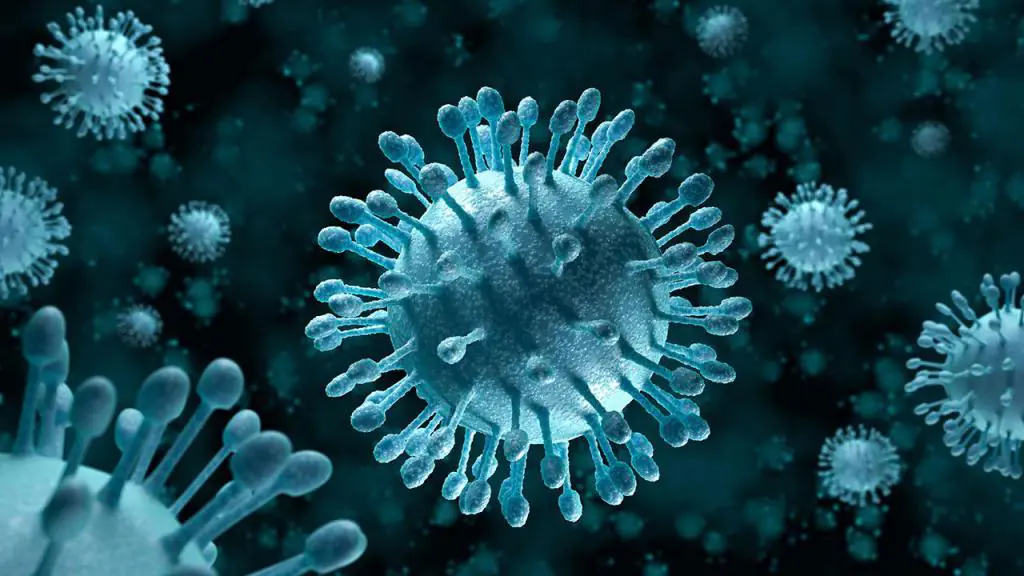
If pimples appear on the nipples or the areolas are covered with pimples or boils, then the causes must be sought in infectious diseases. Although there are a number of other predisposing factors for the occurrence of this phenomenon:
- Infection. It penetrates into the nipple and under the skin of the areola through the milky pores of the nipple. First of all, damage to a virus such as Staphylococcus aureus or simply staphylococcus is considered.
- Dermatosis. A skin disease caused by exposure of the skin to various fabrics, personal care products, or cosmetic creams and ointments.
- Physical damage to the nipple. This usually occurs during breastfeeding. Or as a result of other physical impact on the nipple.
- Candidiasis. White bumps around the nipples may be the result of a fungal infection of the breast. Fungus Cand >
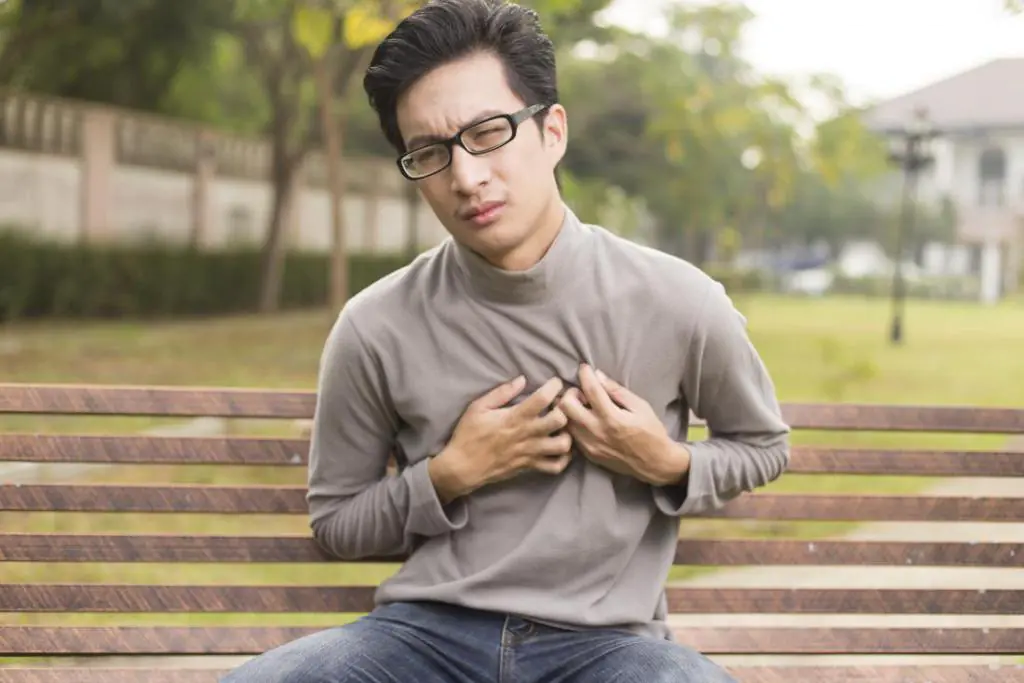
In men, pimples on the nipples also occur due to hormonal imbalance, for example due to an overdose of steroid drugs. In addition, herpes, human papillomavirus, and candidiasis do not discriminate between gender. So pimples on a man’s nipples can also be due to these diseases.
Most often, pimples affect men with weakened immune systems, such as those with HIV infection or diabetes.
Symptoms of the lesion
Pimples near the nipple in both men and women manifest themselves differently, depending on the pathologies that caused them and the individual characteristics of the body.
They can appear literally in a few hours, this is observed during breastfeeding, or appear only periodically under the influence of some influences - a cold, hypothermia, an allergic reaction.
Along the way, additional manifestations may appear - discharge of blood and pus, swelling of the tissue around the nipples, severe pain in the areola area, and so on. Most often, pimples on the nipples are accompanied by burning and itching.
With an infectious etiology of acne, the patient's body temperature rises, the cervical and axillary lymph nodes increase in volume, and general weakness is observed.
Neoplasms occur both on one breast and on both, regardless of the reasons that caused them.
What is the danger
Whatever the reason that leads to the appearance of pimples or other growths on the nipple and areola, you should immediately consult a doctor. After all, discharge from a damaged nipple can, for example, infect the baby with dangerous diseases during breastfeeding. The aesthetic aspect of the problem should also be taken into account. Pus and other secretions leave wet, unpleasant stains on clothes.
Neoplasms on the nipples during lactation

You need to understand that most often, problems with nipples occur in women during pregnancy, and especially during breastfeeding. It is known that during this period a nursing mother is especially susceptible to various diseases, since her immune system is significantly weakened.
In this regard, she develops specific conditions - lactation mastitis caused by stagnation of milk, infection of the milk ducts, cracks and injuries to the nipple itself. During this period, a woman should be especially careful about her personal hygiene, nutrition, sleep patterns and her general condition. Why there are pimples on her nipples should be determined by her attending physician.
Diagnosis of the causes of pimples on the nipples
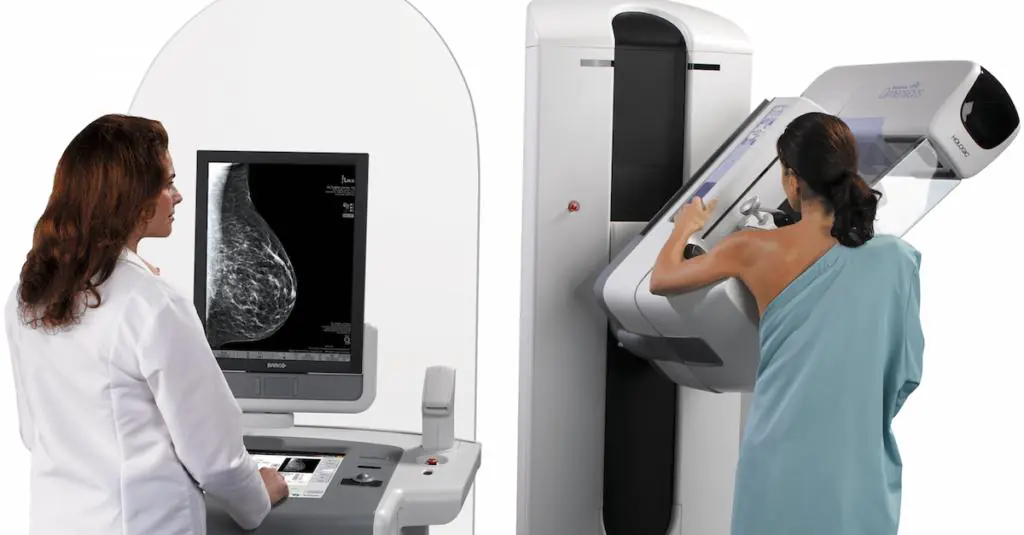
Diagnosis of the causes of pimples on the nipples in both men and women begins in the same way - collecting an anamnesis. The doctor questions the patient in detail about the timing of the appearance of tumors, the patient’s lifestyle, his diet and the presence of chronic diseases.
An external examination of the damaged skin surfaces is carried out, as well as palpation of the mammary glands themselves. At this stage, the doctor can determine the presence of lumps in the milk ducts and glands.
After this, the patient is sent for laboratory blood tests, scrapings from tumors and, if necessary, a biopsy of soft tissue samples.
Instrumental studies are used to clarify the diagnosis. For women, mammography and ductography can detect pathologies in the mammary gland and milk ducts. Men are prescribed chest x-rays and ultrasound diagnostics.
The most informative diagnostic method is magnetic resonance imaging. During such a study, it is possible to detect the smallest foci of cancer.
Treatment
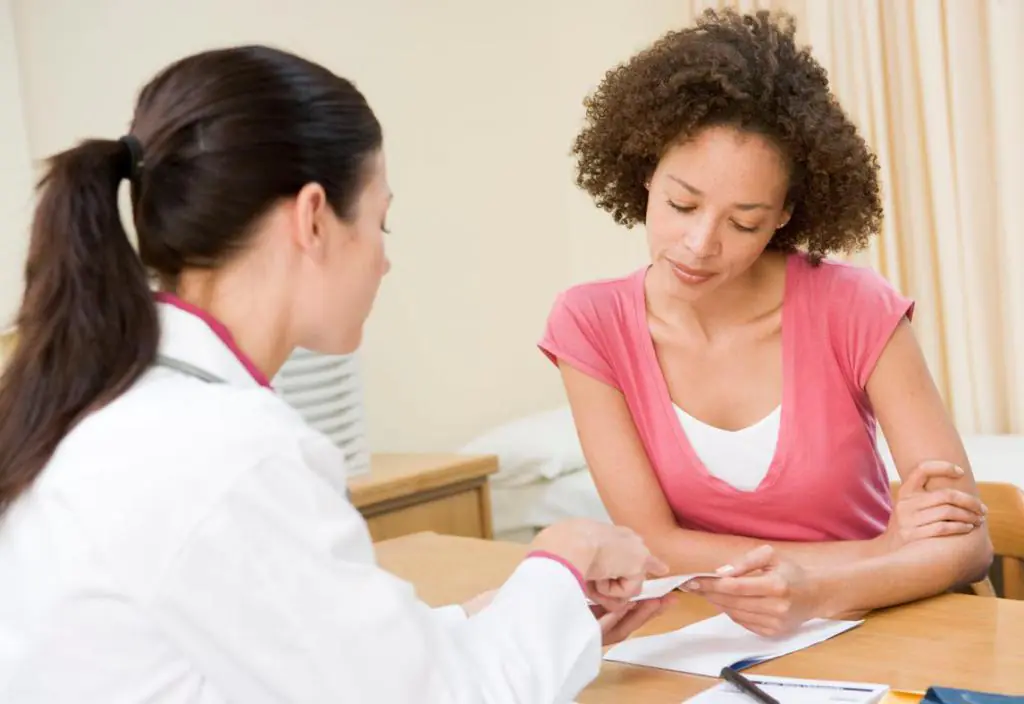
The treatment method for pimples and pimples on the nipples and areolas depends entirely on the diagnostic results. All medications are prescribed by a doctor. Self-medication is not only ineffective, but in some cases it is extremely dangerous.
If the neoplasms are the result of a bacterial disease, the patient is prescribed a course of antibiotics. Usually this is Ampicillin, Gentamicin, Oxacillin, or Clindamycin. The dosage and regimen of use are prescribed by the doctor. There are topical ointments with an antibacterial effect - Clotrimazole or Levomekol. Before treating the affected skin with ointment, it is important to rinse it thoroughly with a weak soda solution.
Actovegin or Solcoseryl ointment works well to relieve inflammation from the skin of the nipples and areolas. But these drugs are strictly contraindicated during lactation.
For women who are breastfeeding, there are separate, specific medications, for example, Dexpanthenol or Bepanten Plus cream. Again, we must not forget about individual intolerance to the components of the drug and use it extremely carefully.
Herpetic pimples on the nipples are treated with Acyclovir, Zovirax or Bactroban. In addition, the patient is treated with vitamin and mineral complexes designed to strengthen his immune system.
The fungus is treated with Nystatin, Miconazole, Mycostatin and Clotrimazole. These drugs are contraindicated for pregnant women.
During treatment, special attention is paid to personal hygiene and wearing clothes that do not cause irritation or allergies.
Treatment of pimples on nipples using traditional medicine methods
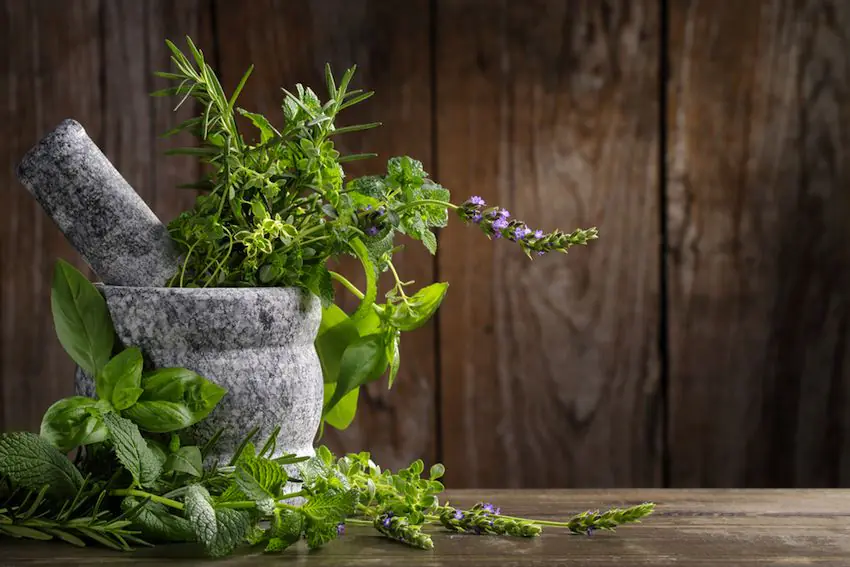
The appearance of pimples and cracks on the nipples, especially during breastfeeding, is not a new problem. In this regard, traditional medicine has developed several methods for treating this condition. But we must understand that the effectiveness of such therapy will be much higher if it is used together with traditional methods. You cannot rely on traditional medicine and use only it.
- Mother's milk has a healing effect - that's a fact. Therefore, it can be used by smearing the nipple before and after feeding. You just need to let the milk dry completely.
- You can massage your nipples by first lubricating them with olive oil. Tea tree oil is also good for this. But this can only be done if there are no signs of inflammation.
- Aloe juice has a healing effect on cracked nipples. But we must not forget to wash it off before feeding, otherwise the baby may develop diarrhea.
- Compresses made from chamomile relieve inflammation well. The product is brewed like simple tea - 1 tbsp. spoon per 500 g of water.
Prevention of diseases that cause pimples and pimples on the nipples
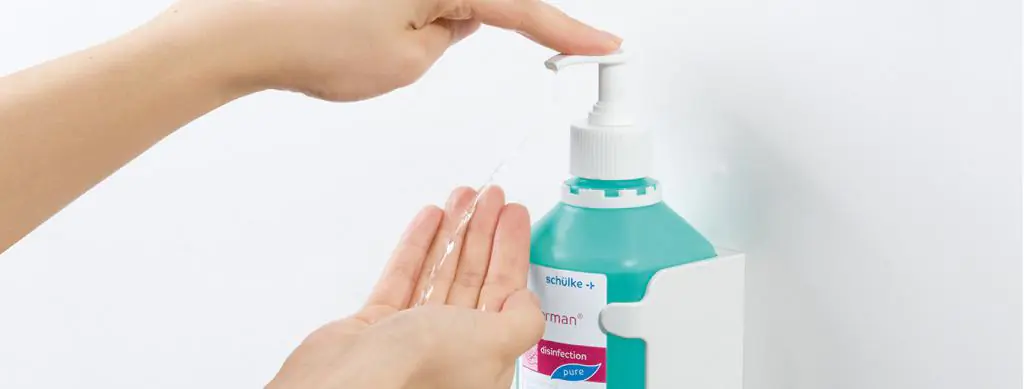
To prevent diseases that cause pimples and pimples on the nipples, it is enough to follow just a few recommendations. This is much easier than treating a painful and unpleasant condition later.
First of all, this is personal hygiene. This is especially important during breastfeeding. Before each feeding, the nipple is thoroughly washed with warm water and a neutral detergent. In general, it is recommended to take a shower at least 2 times a day, especially during hot periods.
Linen should be made from natural fabrics, silk or cotton. Synthetics, wool and other materials not only rub nipples, but also cause allergies.
In order to reduce the risk of infection such as herpes, human papillomavirus, HIV and others, you need to avoid unprotected, casual sexual contact. You cannot use other people’s personal hygiene items – razors, towels, toothbrushes, or other people’s dishes. To strengthen the immune system, it is recommended to exercise regularly.
Conclusion
Sore nipples should not be taken lightly. After all, there are cases when this seemingly harmless condition hides incipient breast cancer. At the first symptoms, you should immediately consult a doctor.
Why do pimples appear on and around the nipples, is there a risk of infection, when is their appearance safe, and in what cases should you think about the presence of the disease?
The mammary glands are a vulnerable part of a woman’s body, where various dermatological disorders often occur. Some of them are dangerous, others are not. In order not to waste time, it is worth knowing about all the existing phenomena that occur on the nipples.

Variant of the norm
Some women - after a close examination of the mammary glands - begin to fear for their health. Examining the bumps, they suggest that this may be an inflammatory process or even a neoplasm.
However, every woman has glands in this area of her body that form the so-called Montgomery tubercles.
Signs of anatomical formations:
- location strictly inside the areola;
- dry spots on the chest;
- lack of redness of the glands;
- itchy chest;
- matching the shade of the tubercles to the color of the nipple;
- nipples itch;
- nipples swell;
- absence of painful syndrome.
The average woman has nipple bumps ranging from 10 to 12, but sometimes this number increases to 30 or decreases to 5. The peak for bumps is during pregnancy.
The number of tubercles depends on the area of the areola (in some women it reaches 10 cm in diameter). The larger it is, the more glands on its surface.
Mechanical irritation and other influences
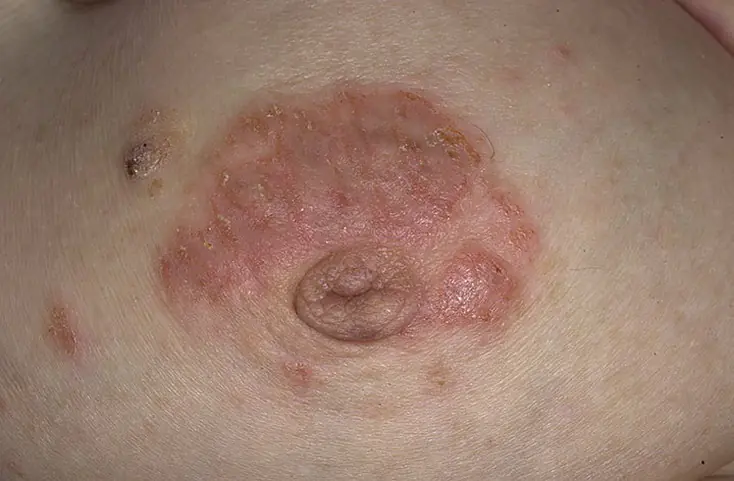
Spontaneous scratching of the nipples during sleep leads to the appearance of wounds that cause the appearance of points similar to tubercles. Excessive friction, as well as exposure to synthetic substances, also increases the risk of developing Montgomery tubercles.
Powders, body creams, clothing, and tight bras are possible causes of allergic dermatitis. If dots appear near the nipples, then it is worth considering the option of insect bites, including bedbugs. Neglect of hygiene rules also leads to blockage of the ducts and swelling of the tubercles.
During puberty

In teenage girls, lumps appear suddenly, so they are also interested in the nuance associated with why pimples appear on the nipples at a young age. The phenomenon develops before the first menstruation, which indicates the girl’s emerging ability to bear children.
After the cycle normalizes, Montgomery's tubercles decrease, while the first menstruation sometimes causes them to become very swollen and red. Occasionally, nipple problems are observed throughout the entire period of hormonal changes.
Inflamed bumps that release white contents are often acne. It usually disappears after puberty ends. Acne also disappears on other parts of the body.
Changes during pregnancy

Fertilization is the initial stage of preparing the body to feed the unborn baby. An additional purpose of the glands is to increase the child’s appetite, which is caused by the secretion of a special secretion.
By acting on the tubercles, hormones lead to an increase in their number. After the end of the feeding period, the tubercles become noticeably smaller. In the presented photos you can see how the size of the tubercles changes during gestation.
The reason for the thickening of the pimples is a protective mechanism invented by nature. It prevents infection from entering the nipple and reduces damage during breastfeeding.
Herpes
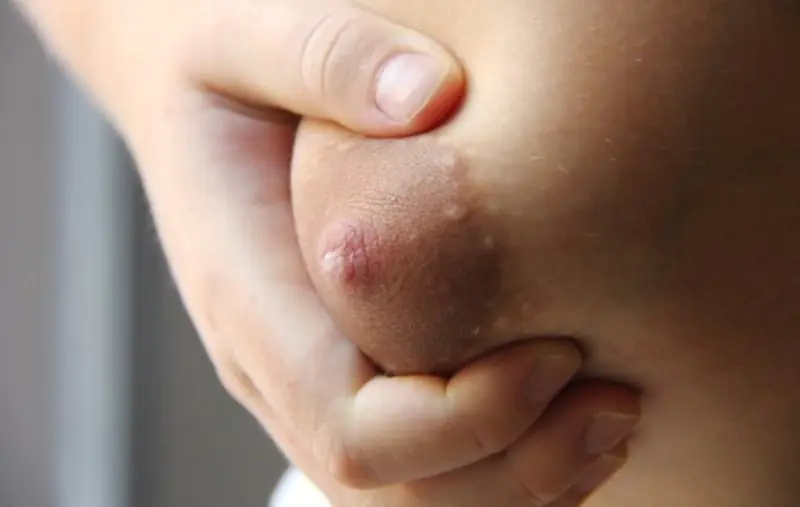
The appearance of a skin area in which there is an area of small white rashes is a sign of herpetic infection. A common location of the lesion is the area near the nipple (usually under it).
The pimples have moist content inside, so they burst within a week after they appear. Damage to the capsule leads to micro-wounds, which increase the risk of infection.
A nipple affected by herpes comes into contact with the baby's mouth, which will certainly become infected during breastfeeding. It is recommended to express milk to reduce the risk of infection, or even switch to artificial feeding.
Pathological conditions

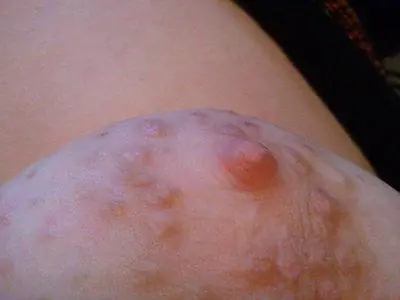
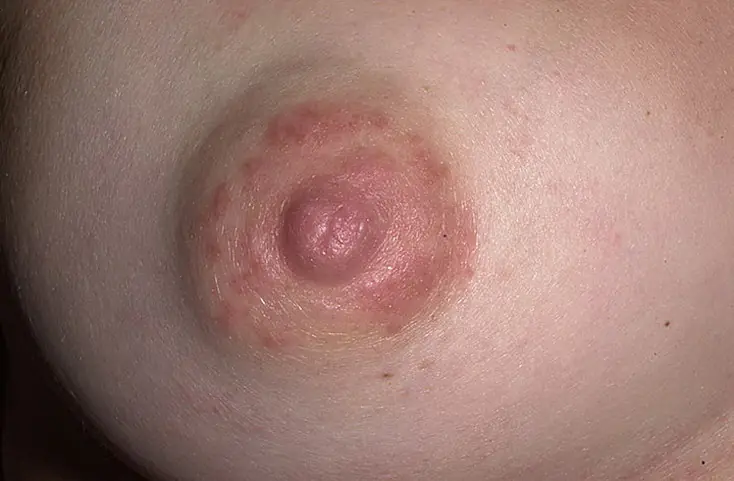
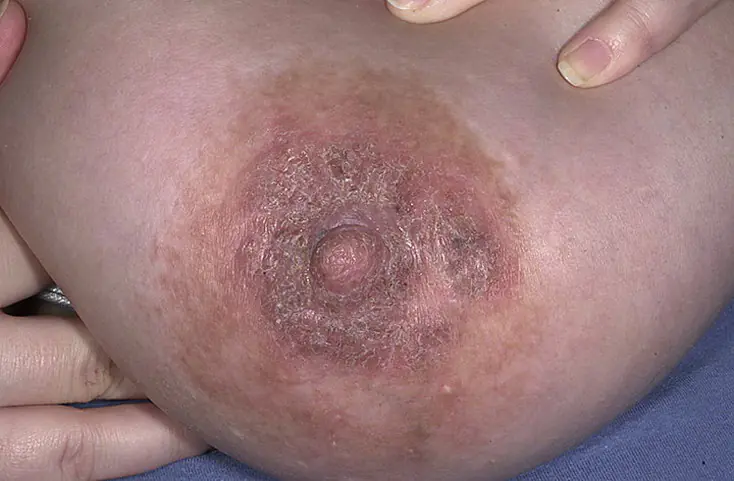
Some pimples around and inside the nipple of the breast are a consequence of the development of pathology.
- Eczema. A complicated form of allergy, the result of excessive friction or hormonal imbalance.
- Neurodermatitis. An allergic reaction develops after nervous stress and mental disorders.
- Atheroma. A subcutaneous clot of adipose tissue forms not only on the dermis, but also on the nipples. Blockage of the duct leads to the accumulation of secretions, which leads to the formation of a wen. The symptom is the presence of a rolling ball inside.
- Telit. Redness of the entire surface of the nipple is called by this medical term.
- Mastitis. The inflammation is located inside the mammary gland and spreads to the nipple and areola (blood is often released from them).
White pimples that appear around the nipples in women are a sign of furunculosis. Entering the epidermis through wounds, pathogenic microflora causes inflammation, often transforming into a purulent process.
If they appear, then urgent treatment is needed: some nodules lead to necrotic processes and abscesses. Doctors recommend opening pustules, but only under the supervision of a specialist.
There are three answers to the question of which doctor you should see. When there is a suspicion that the activity of the mammary gland is impaired, then go to a mammologist, or a skin specialist - a dermatologist. If you suspect the development of a neoplasm, it is better to visit an oncologist.
Paget's disease is a malignant disease that is accompanied by the appearance of ulcers and pain. In most patients, the pathology is localized on the nipple, less often - near the areola.
Conclusion
Suddenly appearing pimples on the nipples in women are mainly related to anatomical formations, but there are also manifestations that are caused by diseases.
Doctors warn! Shocking statistics - it has been established that more than 74% of skin diseases are a sign of parasite infection (Accarida, Giardia, Toxocara). Worms cause enormous harm to the body, and the first to suffer is our immune system, which should protect the body from various diseases. The head of the Institute of Parasitology shared the secret of how to quickly get rid of them and cleanse your skin, it turns out that’s enough. Read more .
White bumps are the consequences of the effects of herpes on the body, and doctors can only eliminate them with medication. Purulent processes are also dangerous, so they should be neutralized as soon as possible.
Hello, dear readers. Do women often look at their breasts in the mirror? It happens, especially during the period of bust growth, that is, puberty. If you find pimples on your nipples, once again, looking at your breasts in the mirror, should you be scared and run to the doctor. Or maybe you are pregnant and Montgomery tubercles have become noticeable?
Although, it would be a good idea to examine the breasts and the NAC area (nipple and areola) regularly (once a month) as part of a self-examination. Let's talk about what pimples on the areola (the dark circle around the papilla) can be. And what kind of things are they? Oh, we forgot another important point: we are talking about women, but do men have such formations?
Types of pimples

Actually, “pimples” is not a medical term. This is what skin formations are called in everyday life:
- in the form of a tubercle (tubercle) - an element without content, above which the color and structure of the skin changes (the tubercle is located in the second layer of skin - the dermis);
- nodule (papules) - an element without a cavity and contents, but with a low color of the skin;
- abscess (pustules) - a “pimple” with purulent or bloody contents;
- blister (urtica) - a cavityless pink formation, sometimes with a whitish tip.
Even the Montgomery glands fall into this category - these are normal formations, altered sebaceous glands located under the skin of the areola.
What do pimples look like?
What are these formations or elements? I would like to say how girls are different. These formations differ:
- by color (color unchanged, white, black, brown, red);
- pain (painless, slightly painful, very painful);
- the absence or presence of cavity and contents in each element;
- quantity (single, multiple);
- size (small, large).
Now let’s go from normal to serious pathology. The norm is separated from a threatening disease by only 4 steps.
Step 1 Normal: Montgomery tubercles
Montgomery's glands (areolar glands, glandulae areolares) are formations located on the areola along the periphery of the nipple:
- painless;
- no change in skin color SAH;
- secrete a special secretion that moisturizes the areola and enhances the baby’s desire to suckle milk;
- There are usually 10-12 such formations in quantity (the minimum number is 4, the maximum is 28, always even).
These glands become noticeable in women during pregnancy. Visible during the entire period of feeding the baby. Then they gradually “dissolve” (become invisible). In girls they can be noticeable during puberty. Montgomery's glands don't hurt!
In men, these glands are normally not visible.
If the bumps become red, pain appears - this is no longer the norm. Hyperemia (redness) is a sign of inflammation. And you need to see a doctor. The cause of inflammation of these glands may be infection or hormonal imbalance.
Step 2 Pimples are not the norm, but not catastrophic
Atheroma| Allergy | |
| Benign neoplasm, tumor, wen | Small multiple rashes (vesicles, urticarial rash) |
| May be slightly painful or painless when pressed | The rash is very itchy |
| Does not pose a threat to life | The skin defect can become infected. Constant itching causes neuroses |
| Formed as a result of blockage of the sebaceous duct | Develops due to dietary errors, wearing synthetic underwear, contact with chemical reagents |
| Looks like a white pimple | Appear as red or pink small rashes that may coalesce |
| If necessary, removed by a surgeon | Treatment with antihistamines, calcium supplements, and less often hormones is required |
Step 3 Bumps are more dangerous
Furuncle| Psoriasis | Benign mole (nevus)* | Papilloma, wart | Herpes on the chest | |
| Boil is a purulent inflammatory process of the hair follicle with purulent melting of tissue | Non-communicable disease with a chronic course | Large, medium and small formations (pimples, tubercles) near the nipple | Single or multiple lesions near or around the nipple, light to dark brown | Multiple blisters with clear or yellowish contents |
| A boil is a painful element. Dangerous due to the possibility of bacteria entering the blood and developing septicemia or mastitis | The formations are very itchy | Painless, not dangerous, but if damaged they can become malignant (rarely degenerate into melanoma) | Painless, not dangerous, but if damaged they can become malignant | Very itchy |
| Requires treatment: antiseptics, antibiotics | Requires special treatment | Needs to be treated with antiviral drugs | ||
| Occurs due to the penetration and proliferation of bacteria in the follicle (due to stress, poor hygiene, injury to the SAC with underwear) | The causes of the disease are not fully understood. Doctors assign the main role to disruption of the nervous system; additional factors are considered: infection and heredity | Presumably occur due to hormonal stress (including during pregnancy), after psychological trauma or physical damage to the nipple. The exact cause has not been established | They arise due to hormonal imbalances, the presence of parasites in the body, disruption of the pancreas, or the penetration of the human papillomavirus (HPV). Among the many HPV strains there are also oncogenic strains (cancer-causing) | Occur due to the penetration of the herpes virus through damaged skin or reactivation of a “dormant” virus in the body after stress, hypothermia, or drinking alcohol |
| Looks like a red and large pimple with a white “head” against the background of erythema (redness of the skin SAC) | It occurs rarely on the chest and usually after injury. The rash appears as round papules in the SAH area, which may coalesce | It looks like a light brown, tan or brown bump. Less often, the tubercle is red - this is a vascular nevus | Looks like a light brown, brown or cinnamon small papilla or bump | Fluid-filled blisters against reddened skin |
| Attention: do not squeeze the boil on the areola! This can lead to infection penetrating deep into the gland and mastitis. | The rash causes moral and physical discomfort, neuroses (due to severe itching). Fabrics may appear due to scratching (bacterial or fungal infection is associated) | Moles can become injured, infected and inflamed | Both warts and papillomas can become inflamed and increase in size due to stress, injury or hormonal surge | Treatment is necessary; if you are breastfeeding, you will have to temporarily wean your baby off the breast. Attention: opening bubbles contain many viruses. |
* - Flat moles usually do not pose a threat. But those rising above the surface are dangerous because they can damage them, cause infection, or provoke malignancy (degeneration into a malignant neoplasm).
All these elements, formations, acne appear in both men and women. In women, more often due to physiological hormonal disturbances (menstruation, pregnancy, menopause).
Step 4 Threat! Threat!
Paget's cancer is a malignant process that occurs mainly in the area of the SAH. It is diagnosed not only in women, but also in men.
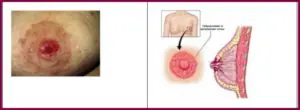
Why such a lesion of the SAH develops is not exactly clear. Usually this disease is combined with other forms of breast cancer. At the initial stage of the disease, the nipple itches, peels, and may be covered with small pimples. As the disease progresses, pain, burning, tingling, discharge from the nipple, and ulcers appear.
For this disease, both surgery and auxiliary treatment (chemo- and radiation therapy). The disease is life-threatening for the patient.
Melonoma-dangerous breast moles are another type of potentially dangerous neoplasm. These moles are benign, but often develop into melanomas.
The cause of the disease is a violation of the division of melanocytes (pigment cells of the skin).
Such formations look different. They can be brown, black, light (almost yellow), and the edges are usually fuzzy. The formations are large and differ in consistency from the surrounding tissues. There are several types of such neoplasias (neoplasms).
If you have any pimples in your SAH area, don’t panic, but be sure to consult your doctor. Do this as quickly as possible so as not to trigger the disease if it is dangerous or potentially dangerous.
This concludes our review of the topic of pimples in the field of SAH, and we say goodbye to you. We hope our article gave you food for thought and helped you choose further behavior. Visit our website again and share the article with your friends via social networks.
">



